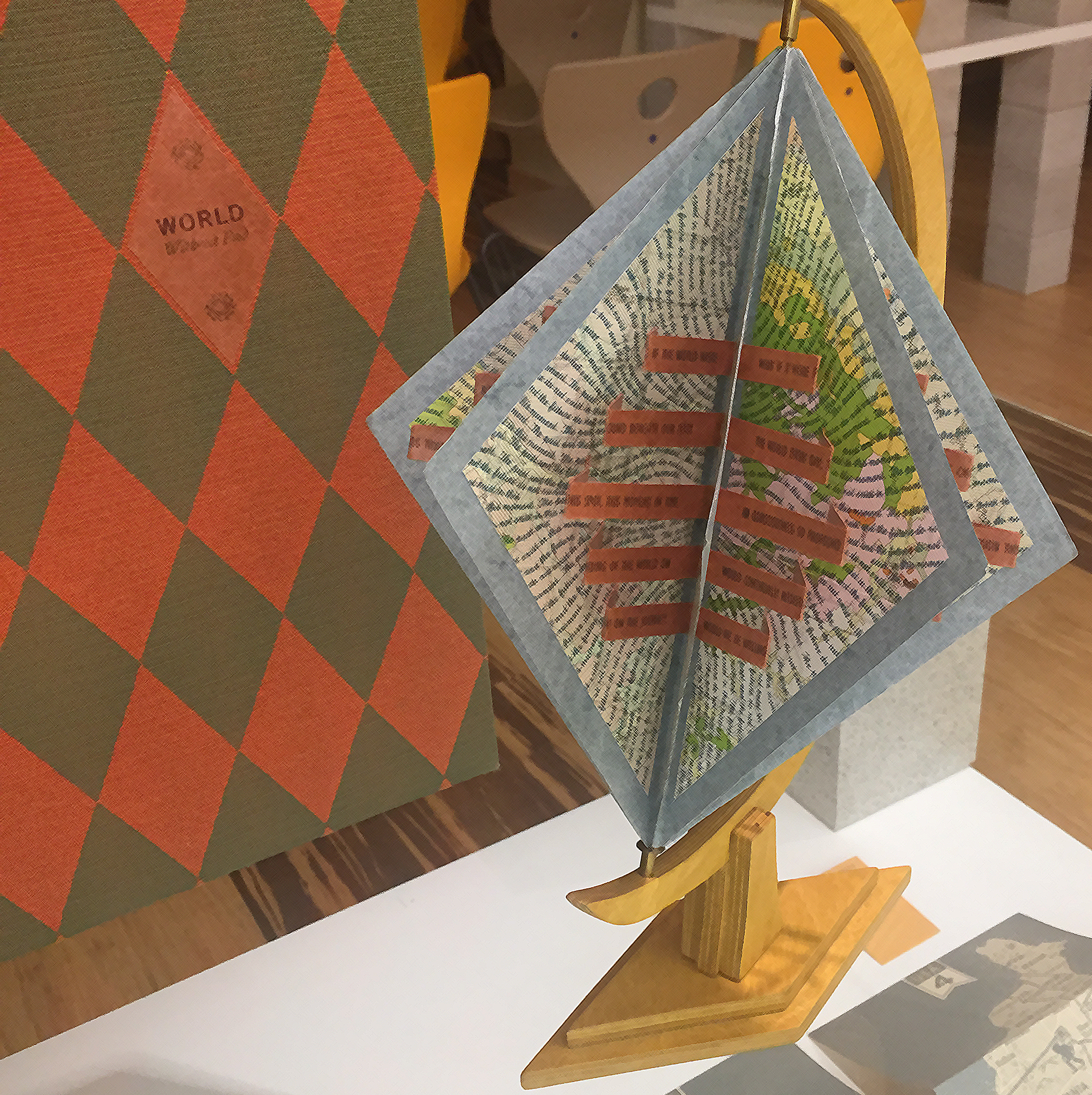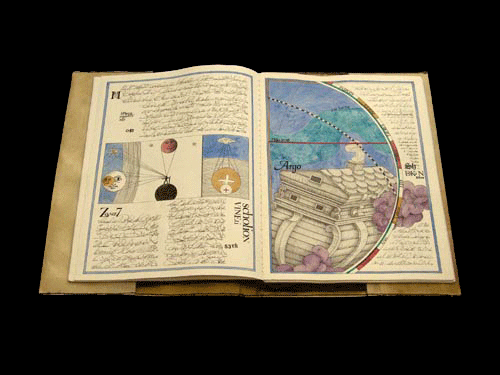Books as Aesthetic Objects


By Carlos Macià
1992
Novus Atlas Coelestis was created by Carlos Macia, a Cuban-born artist who grew up in Miami. Macia spent many years in seminaries in Spain and the Dominican Republic in the 1970s. By 1980, he decided he was not destined for the priesthood and then devoted his life to another passion: art.
Macia created this atlas in 1992. The book is an exhibition of remarkable erudition using modern materials and ancient style: opening it is a bit like venturing into a dream country where the language seems familiar yet is beyond our understanding.
The book is covered in an animal parchment wrap with a border of machine-stitched black thread, and is titled using transfer lettering. Immediately we experience the dichotomy of the traditional/modern. We open the book to reveal a burlap end-paper painted black. The first page presents a solid black surface bordered in ochre, blue and white; it is perhaps the night sky before we are aware of its depth, or its richness. The book promises to be our guide.
We find what appears to be an illuminated manuscript: each page is painted by hand with highlights of gold leaf. The drawings are richly detailed, but Macia ironically reminds us through the liberal use of transfer lettering and the occasional appearance of transparent Mylar that he is playing an ancient theme with modern instruments.
If we look closely, the hand-written "text" of the book presents a uniformly controlled scribbling. There is a definite baseline evident in the handwriting with no descenders; it’s an impressive and weighty script purely imaginative
The book is rich with made-up material: maps, tables of elements, lists, mythic creatures, moon phases, sight-line diagrams, architectural fragments, fantastic and zodiacal figures, and all the paraphernalia of a real guide to the marvelous world of the heavens. As John Updike famously said, “In the night sky, darkness is not all.”
There is only one book like this, and here it is.
- Judith Klau